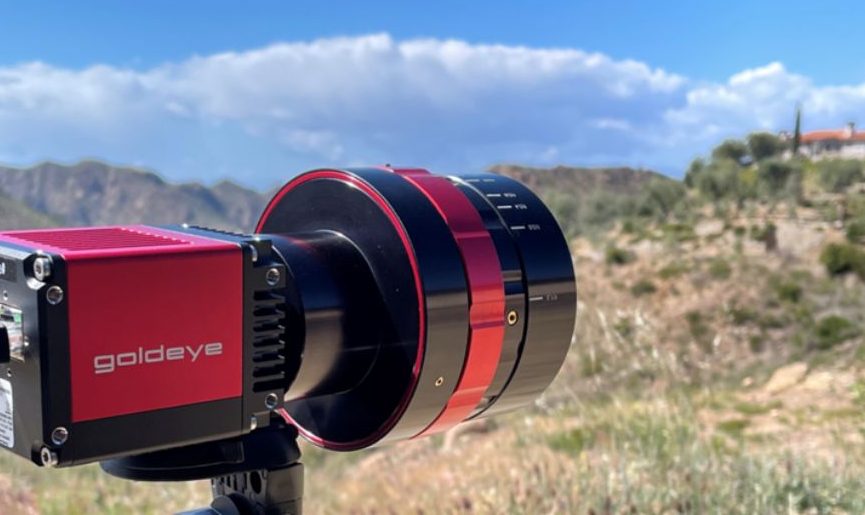A SWIR camera is a significant investment. Whether you’re a laser scientist or an aerospace engineer, there are many choices to consider. Learn five ways to compare SWIR cameras on the market.
Pixel Size
The industry’s smallest pixel pitch for InGaAs is currently 5 microns. Axiom offers a selection of Goldeye cameras that match this standard.
Level of Cooling
Some cameras are uncooled, some thermoelectrically cooled (TEC), and some water-cooled. The level of cooling directly affects the amount of dark current and, therefore, dark noise when increasing the exposure time. Our deepest cooled InGaAs camera is C-RED 2 with several minutes of exposure.
Sensitivity Given by the “Readout Noise” or “Temporal Dark Noise” In e-
This noise originates from the electronic readout circuit and defines how sensitive a camera is in low-light conditions. State-of-the-art values for InGaAs range from ~18 to 30e-, but deep-cooled MCT cameras such as our C-RED 1 can achieve sub-electron readout noise.
Quantum Efficiency (QE)
Quantum efficiency defines how efficient the conversion of photons into electrons is for a given material. Standard InGaAs cameras have a high QE between 900 to 1700 nm. Some cameras offer extended range in the visible part of the spectrum (400 to 1700 nm), such as the GoldeEye VSWIR g-130 030 tec 1, while others have an extended range at higher wavelengths (up to 2.2 µm), such as the C-RED 2 er 2.2 camera.
Sensor Resolution/Size
The sensor resolution/size is given in pixels. Standard sensors have a size of 320 x 256 px (QVGA), 640 x 512 (VGA), or 1280 x 1024 (SXGA). The pixel size can vary for each format. The bigger a pixel is, the more light it collects. The more pixels, the more resolution on an object.
If the 5 parameters above do not help in your choice , contact our technical sales team , we will help you compare swir cameras and allow you to make a sound decision. Axiom Optics supplies short-wave, medium-wave, and long-wave infrared cameras and accessories for scientific and industrial use.

